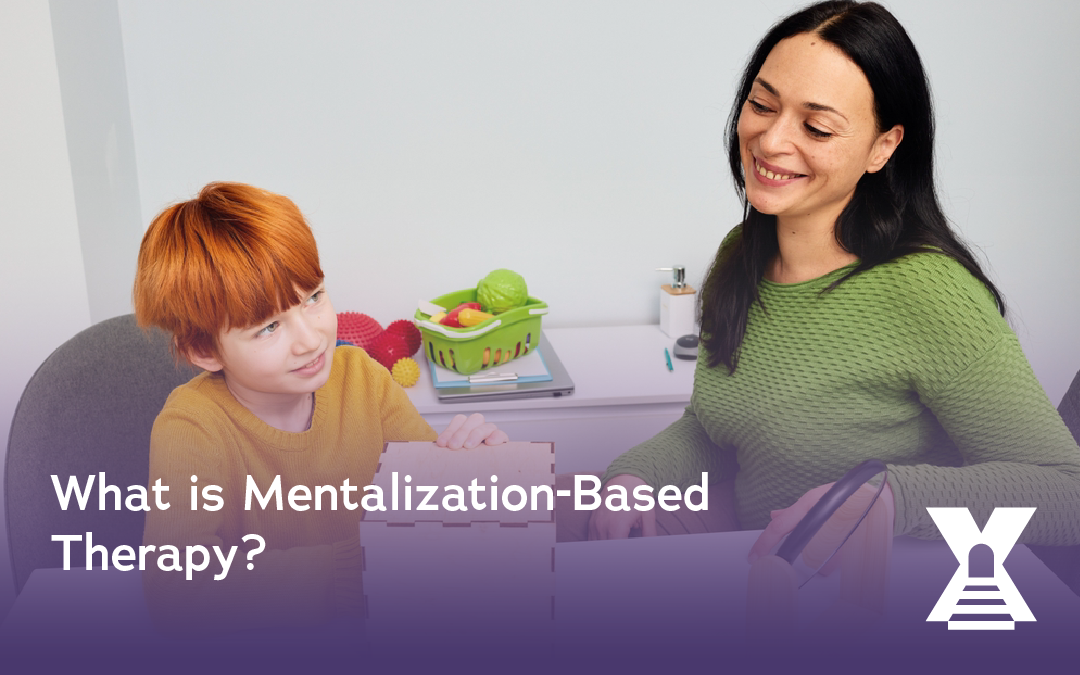More and more, Mentalization-Based Treatment (MBT) is helping people with many different mental health issues. Learning about yourself and those around you is the focus here. Expect a boost in your emotional smarts! For example, you’ll learn to recognize the subtle cues in body language and facial expressions. A better life is possible with mentalization-based treatment. Feeling better and connecting with others are easier with this treatment. Feeling better and connecting with others go hand in hand. Increased self-awareness and the ability to understand others’ perspectives are direct results. Imagine being able to predict how someone might react to a certain situation, or to better understand your own motivations in a given scenario. Expect a different viewpoint—this tool shows you things in a whole new light.
Table Of Contents:

- What is Mentalization-Based Treatment?
- The Origins of Mentalization-Based Treatment
- Mentalization-based treatment: how does this therapy approach function?
- Mentalization-based treatment: What are the upsides? Better communication and more empathy? You get two things with this!
- Who Can Benefit from Mentalization-Based Treatment?
- The Process of Mentalization-Based Treatment
- Challenges in Mentalization-Based Treatment
- Comparing MBT to Other Therapies
- Mentalization-based treatment: What’s next?
- Conclusion
So, what exactly *is* Mentalization-Based Treatment?
Mentalization-based treatment, frequently referred to as MBT, is a specific type of psychotherapy primarily developed by Anthony Bateman and Peter Fonagy. The goal of MBT is to build a person’s skill in mentalizing—figuring out what’s going on in their head and the heads of those around them. Better emotional regulation and stronger relationships are direct results of increased self-understanding. Life becomes more satisfying.
Mentalizing is a key skill taught in MBT. Your inner world and the inner worlds of the people around you matter. Pay attention to them both. Consider their feelings and what they might want. For example, imagine someone is quiet; they may be shy or simply tired. People with certain personality disorders or mental health conditions might find it especially hard to develop this skill because their ability to understand others’ minds might be impaired. Improved social function is often a key outcome for those who engage in this treatment.
The Origins of Mentalization-Based Treatment
MBT was initially formulated by Bateman AW and Fonagy P. to offer an effective treatment for borderline personality disorder (BPD). They observed that many individuals diagnosed with BPD, often referred to as BPD patients, struggled significantly with understanding their own complex emotions and the intentions motivating others’ actions. Trouble understanding others’ feelings caused big emotional outbursts, rash actions, and rocky relationships. This really messed with their social life.

Mentalization-based therapy grew from attachment theory. How well we understand others’ emotions depends a lot on our first relationships. For example, a child who grows up in a home with lots of emotional support will probably be better at reading emotions than a child who does not. A secure attachment is often associated with a stronger mentalizing capacity. Mental health experts have successfully used MBT to help people with many different problems, not just borderline personality disorder.
Depression, anxiety, eating disorders—even antisocial personality disorder—can all be contributing factors. Mental health professionals find mentalization-based treatment helpful because it can be adjusted to fit different needs. Patients gain a deeper self-awareness and learn to appreciate different perspectives—it’s a win-win! This makes MBT effective for a wider patient population.
Mentalization-based treatment: how does this therapy approach function?
Mentalization-based treatment typically integrates both individual and MBT group therapy sessions. In these settings, the MBT therapist actively works with clients to cultivate and strengthen their ability to mentalize. Improved self-reflection is the aim of this treatment. A few core methods make it work.
Figuring out and naming feelings is a big part of this, and it can be tough for people who aren’t so good at understanding their own emotions. Clients also explore different perspectives in various situations, rather than defaulting to a single, often negative, interpretation. Figuring out what went wrong in a conversation and understanding people’s thoughts is really important.
Many tools are in a therapist’s toolbox. These are used to strengthen a client’s emotional regulation and mentalizing abilities – the ability to understand their own thoughts and feelings and those of others. For example, a therapist might use mindfulness exercises to help a client become more aware of their emotional state or cognitive behavioral techniques to help a client identify and challenge negative thought patterns. These might involve role-playing exercises to explore different interpersonal scenarios, group discussions where patients learn from each other’s experiences, and guided self-reflection activities. Imagine a patient who can better read the room, understand subtle cues, and respond appropriately. This is our target. Understanding your emotions and getting along with others will improve.
Patients in MBT are encouraged to examine their own thinking and the thoughts of others; the therapist acts as a guide, fostering a spirit of inquiry. Patients feel safe to talk openly about their feelings and thoughts because this approach builds trust. There’s no fear of judgment. As the patient practices, their ability to understand others’ minds gets better, and their treatment moves forward.
Mentalization-based treatment: What are the upsides? Better communication and more empathy? You get two things with this!
Lots of research, including studies from PubMed and Google Scholar, points to MBT as a very successful treatment for many. Managing your emotions gets easier. You’ll be better able to handle tough feelings without feeling completely overwhelmed. Stronger relationships grow from mutual understanding. When we make an effort to grasp others’ viewpoints, disagreements lessen, creating a more harmonious connection.

People often find that their depression and anxiety symptoms lessen. Increased self-awareness and a stronger sense of self are common results; participants find their understanding of themselves improves. Stress becomes easier to handle, and tough times feel less overwhelming.
For individuals with borderline personality disorder, MBT has shown remarkable results, a finding supported by multiple studies, some of which may be available as a free pmc article. MBT helped many BPD patients. Studies show fewer self-harm incidents, suicide attempts, and hospital stays after they started MBT. Seriously complicated health problems? Feel better, live better. All better now. Thanks to this treatment. Reduced suffering translates to a higher quality of life; less stress, more joy, and more time to enjoy the important things.
Who Can Benefit from Mentalization-Based Treatment?
While MBT was first designed for treating borderline personality, its principles have been successfully adapted for various other conditions and difficulties. People who might find MBT beneficial include those diagnosed with a range of personality disorders, not limited to BPD. Individuals with antisocial personality features can also see improvements.
Beyond personality disorders, MBT is helpful for those with persistent depression or anxiety disorders, where distorted thinking patterns can be viewed as a lapse in mentalizing. Eating disorders and addiction? It helps with those too. This is so cool; I can’t believe how well it works. It really works. Figuring out what’s causing these problems emotionally is really important. Better self-understanding is a direct result of this treatment; people make healthier choices as a result of this new understanding. For example, someone might start exercising more or eating better. For example, they might learn to recognize the early signs of stress and respond in healthier ways, such as taking a break instead of overworking.
MBT can also be very useful for individuals who generally struggle with emotional regulation or find it hard to maintain stable and fulfilling interpersonal relationships, even without a formal psychiatric diagnosis. It’s not exclusively for those with diagnosed mental health conditions but for anyone looking to improve their mentalizing capacity. Secure attachments are easier to build when you understand how relationships work. Really getting it is what matters most.
The Process of Mentalization-Based Treatment
Mentalization-based treatment usually adheres to a structured approach, carefully guiding the patient through stages of development. The typical treatment period is often extensive, commonly lasting 18 months or longer. Here’s an outline of what one might generally expect when engaging in this form of therapy:
1. Assessment Phase
The treatment begins with a thorough assessment phase. During this initial stage, the therapist evaluates your current mental state, your typical ways of relating to others, and specifically your existing ability to mentalize. Your treatment plan will be personalized. Your personal needs and roadblocks are identified in this assessment. Knowing this helps us create a personalized treatment plan just for you; it’s all about what works best.
To figure out how well you understand what others are thinking, we’ll have you answer some questions and participate in some structured interviews. Therapy works best when you know exactly what you’re aiming for. Understanding the patient’s current level of social functioning is also a key component.
2. Individual Therapy Sessions
You will meet one-on-one with your MBT therapist, often on a weekly basis, for individual therapy sessions. Self-awareness grows with these sessions; you’ll see yourself more clearly. I’d like to know what’s been happening with you. What’s going on emotionally? Relationships: Are they a blessing or a burden in your life right now? Shall we discuss this? It’s all connected. For example, did a recent fight with a friend make you question your own behavior? Or has a big life change like moving, changing jobs, or graduating college left you feeling lost or confused? Facing these issues? We’ve got this. The therapist’s role is to facilitate patients’ exploration of their mentalizing; this involves self-reflection on thoughts and emotions.

The therapist actively helps the patient think about times when they may have struggled to understand their own or others’ thoughts and feelings. Patients learn to recognize their own unhelpful thought processes. Understanding one’s own mind and the minds of others—that’s the main goal here. Consider this. Can you really help someone if you don’t understand what they’re thinking and feeling?
3. Group Therapy Sessions
Group therapy sessions are a cornerstone of comprehensive MBT treatment and typically occur once per week. Practicing mentalizing in a social group setting? These sessions? This is ideal. Everything’s falling into place perfectly. It’s time to step up and make a change; this is your chance. Your coworkers will share their thoughts on your actions, how you see things, and how well you understand what others are saying. It’s a chance to collaborate too!
Groups are like living labs; you can watch how people interact and learn a lot about relationships right then and there. Relationship problems got you down? This might be the answer. This will come in handy; trust me. I think so, anyway. Expect good results. Observation and personal reflection are key learning tools in this group setting. Patients learn from each other and by considering their own journeys.
4. Skill-Building Exercises
Throughout the treatment period, you will engage in various exercises specifically chosen to improve your mentalization skills. These exercises might include role-playing common challenging situations to practice different responses and perspectives. Mindfulness practices tune you into your inner world, focusing on what you’re feeling and thinking at this very moment.
Thinking about your thoughts and feelings can be really helpful. This process becomes significantly less complicated with the help of guided exercises; they provide structure and support, making the steps easier to follow and understand. Therapists use these tools to assist fellow therapists; it’s a collaborative effort. Emotional balance is easier to achieve with practice. Practicing these exercises makes reading people’s emotions easy; you’ll stay calm under pressure. Envision this scenario. a work meeting that’s got you feeling the pressure. Understanding your colleague’s perspective becomes easier with these exercises; this helps avoid workplace conflicts.
5. Ongoing Assessment and Adjustment
Your therapist will regularly assess your progress throughout the duration of the therapy. Regular evaluations are important. Your treatment will change to meet your progress and any new problems that come up. This ensures you get the best care. Imagine this scenario… as you become stronger, your workouts might get tougher, and as you master a skill, we might add a new challenge. Improving your ability to understand people’s thoughts in many situations is the goal. Your treatment plan will be tweaked along the way.
Adjustments might involve changing the focus of sessions or introducing new techniques. The therapy stays useful and effective because we adjust it as needed. Better social skills and how well someone functions are good ways to see if they’re improving.
Challenges in Mentalization-Based Treatment
While mentalization-based treatment is recognized as an effective treatment, it is not without its potential challenges. Some individuals may find the necessary level of self-reflection and introspection quite difficult to engage with consistently, especially if they are accustomed to avoiding difficult emotions. Others might struggle with the group therapy component, particularly if they experience significant social anxiety or have had negative past experiences in group settings.
It is also important to acknowledge that MBT requires a substantial time commitment. A full course of treatment typically lasts for at least 18 months, often involving multiple therapy sessions per week (individual and group therapy week commitments). Balancing a busy life and maintaining consistent engagement is difficult. For example, imagine trying to keep up with a project while also managing childcare and a demanding job.

Furthermore, delivering MBT effectively necessitates that therapists undergo specific additional training and often require extensive supervision and continuing education. Building epistemic trust—the patient’s trust in the therapist as a reliable source of information and understanding—can also be a gradual process, particularly for individuals with a history of trauma or insecure attachment. You’ll face some roadblocks, but that’s just part of therapy.
Comparing MBT to Other Therapies
Mentalization-based treatment shares some common ground with other therapeutic modalities, yet it possesses distinct characteristics that set it apart. Individuals can make better treatment choices if they understand these key distinctions; healthcare professionals also benefit from this knowledge. Compared to other methods, how does this one fare? I’ll demonstrate. Prepare to be amazed.
| Therapy Type | Focus | Key Differences from MBT |
|---|---|---|
| Cognitive Behavioral Therapy (CBT) | Changing thought patterns and behaviors | MBT focuses more on understanding the mental states (thoughts, feelings, intentions) behind behaviors, rather than directly targeting thoughts for change. The “why” gets a thorough examination. |
| Dialectical Behavior Therapy (DBT) | Skill-building for emotion regulation and distress tolerance | While DBT provides concrete skills, MBT emphasizes understanding one’s own and others’ perspectives and internal experiences as the primary mechanism for change. DBT is more skills-coaching oriented. |
| Psychodynamic Therapy | Exploring unconscious processes and past experiences | MBT is more focused on current mental states and interpersonal interactions in the here-and-now, although it acknowledges the influence of the past. It’s generally more structured and active than traditional psychodynamic therapy. |
Each of these therapies, including structured clinical management which is sometimes compared in research, can be highly effective. The most suitable choice often depends on the individual’s specific psychiatric symptoms, personality, the nature of their difficulties, and their treatment goals. Consulting with mental health professionals can clarify which approach might be most beneficial.
Mentalization-based treatment: What’s next?
With mentalization-based therapy research expanding, its application to a broader spectrum of problems and patients is likely on the horizon. Many teams are working on these applications right now. New findings are anticipated shortly. They’re looking at using MBT for PTSD. It’s hard for people with PTSD to work through the difficult mental and emotional effects of trauma; MBT may offer a new approach.
Child and adolescent development is central to adapting MBT. A child’s capacity for empathy and understanding others’ perspectives—that’s what researchers are studying. Cognitive development and social learning interact; this explains how kids grow and learn. For example, a child raised in a highly communicative family might show an earlier grasp of mental states compared to a child with less verbal interaction. MBT shows promise in autism treatment; it could help people better grasp social cues and the intentions of others—something many autistic individuals find difficult. The potential of MBT combined with other approaches is being examined to develop more effective treatment plans. Patients stand to benefit significantly. It’s a step in the right direction; a positive shift.
The growing body of evidence, including findings from many a randomized controlled trial and systematic reviews accessible via databases like pubmed google scholar or as a free PMC article, supports the efficacy of MBT. Better public health? So, the research? That’s why. Stronger treatments for debilitating mental illnesses, such as personality disorders, are now possible because of this important work. To keep pace with the expanding patient base, healthcare professionals require continuous education in this therapy. The needs of those needing specialized treatment? They’ll be met. Think of it like this: more patients need care, so we need more trained people to help them.

Conclusion
Understanding our own thoughts and feelings, and those of others, is the heart of mentalization-based treatment. Better mental health? This works because of science. Pure and simple. Research is the foundation. Wellness grows from knowledge. Healthy living, one step at a time—that’s our mission to improve lives. Feeling better is our goal. While initially created to treat borderline personality disorder, this method has shown itself to be incredibly flexible, applicable to a much wider range of conditions than originally thought. They really put some thought into how this was made; it’s built like a tank. If you’re having trouble with your feelings, mental health, or connecting with others, MBT might really help.
Feeling better about yourself and relating to others more effectively are two key benefits. Improved social skills and emotional well-being are common outcomes of this treatment; patients find their lives are more stable and fulfilling. For example, patients often report stronger relationships and reduced anxiety. The journey through MBT, often involving individual and MBT group sessions, encourages patients to actively engage with their internal world. The dedication of the MBT therapist in creating a supportive therapeutic relationship is fundamental to this process.
If you are considering mentalization-based treatment, discussing it with qualified mental health professionals is an important first step. They can assess whether MBT, or perhaps mentalization-based interventions, aligns with your specific needs and circumstances, potentially referencing studies from sources like an article pubmed google. Finding what works best for your mental health is a very personal journey. Many people find MBT helpful.




0 Comments